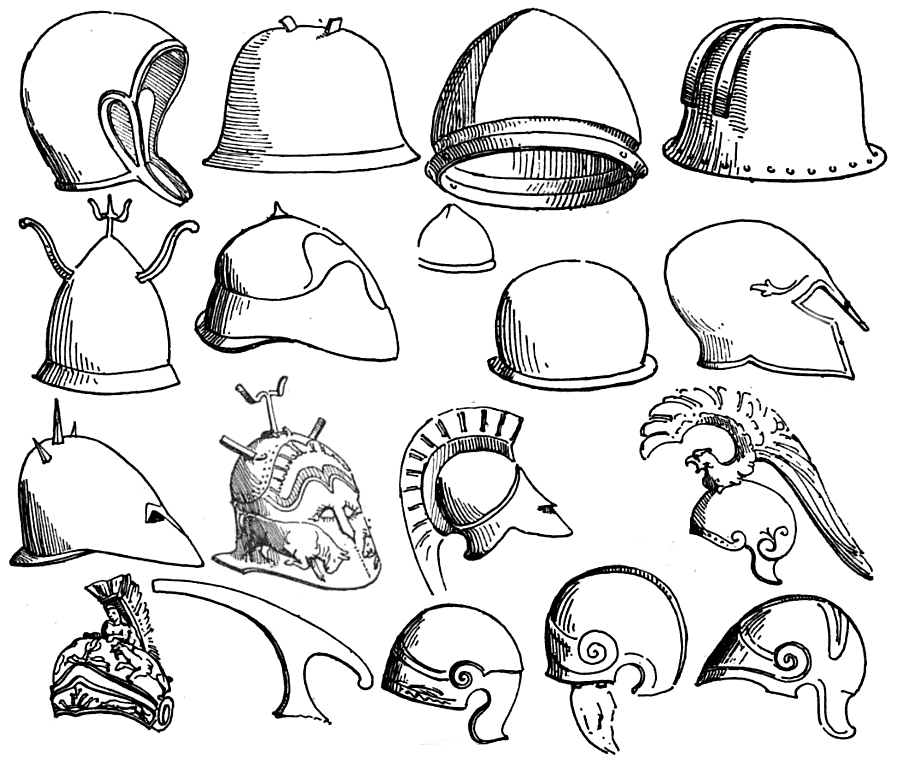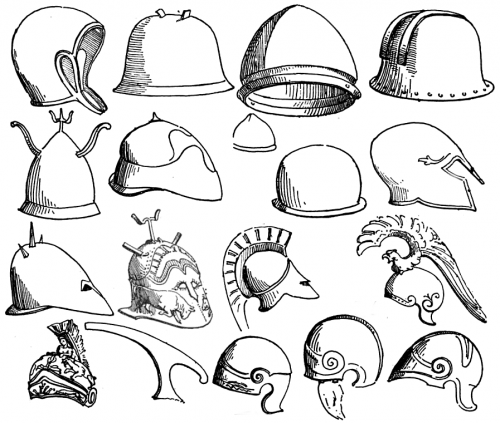A few days ago, I posted some illustrations of Egyptian weapons from an 1894 text on arms and armor. Continuing in that vein, here are some pictures of various Greek and Etruscan helmets.
First row, from left to right:
- Greek casque called a “kataityx”, probably in leather, from the 8th century BC.
- Etruscan casque in bronze, first period.
- Etruscan casque in bronze.
- Bronze casque attributed to the Umbrians (allies of the Etruscans)
Second Row:
- Etruscan casque in bronze. A similar helmet exists in gold.
- Etruscan casque in bronze with fixed visor.
- Greek casques in bronze with inscriptions.
- Greek casque of the hoplites. Bronze.
Third Row:
- Greek casque in bronze.
- Greek casque in bronze with reliefs, antennae and a crest-holder.
- The perfect Greek classic casque seen in many sculptures (though no actual artifacts have survived).
- Greek casque ornamented with horsehair.
Fourth Row:
- Greek casque with horsehair crest and embossed details.
- Crest of a Greek casque in bronze.
- Greek casque with neck covering in bronze.
- Greek casque with chin-strap. Bronze.
- Greek helmet with neck-covering and plume-holder for a horseman.
The illustrations and descriptions have been taken from An Illustrated History of Arms and Armour: From the Earliest Period to the Present Time, by Auguste Demmin, and translated by Charles Christopher Black. Published in 1894 by George Bell.







I was lucky enough to receive a Roman helmet from a very good friend of mine once.